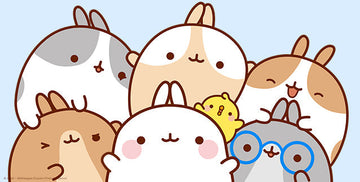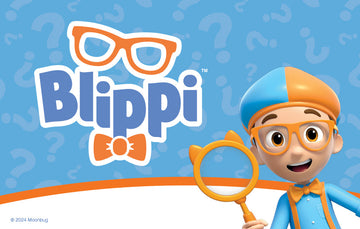Easter is a holiday celebrated in various ways around the globe. Each country has its own unique customs and practices that reflect its culture and traditions. Exploring these diverse Easter traditions can provide insights into how people connect with family, friends, and their beliefs during this special time of year.
From festive foods to creative activities, many cultures have unique ways to celebrate Easter. This article will highlight ten fun traditions that showcase the rich tapestry of global Easter celebrations. Readers will discover how different regions express their joy and togetherness during this meaningful holiday.
1) Bermuda Kite Flying
In Bermuda, kite flying is a cherished Easter tradition. This activity takes place on Good Friday, when families gather to fly colorful, handmade kites.
Kites in Bermuda are often hexagonal or octagonal and feature bright designs. The tradition dates back to when British soldiers brought it to the islands.
Flying kites symbolizes the joy of Easter and the arrival of spring. Locals and visitors alike enjoy this festive gathering, creating a vibrant scene in the sky. It is a fun and memorable way to celebrate the holiday with family and friends.
2) Greek Red Eggs
In Greece, red eggs are a central part of Easter celebrations. This tradition dates back many centuries and is rich in symbolism. The red color represents the blood of Christ and the joy of the resurrection.
During the Holy Week leading up to Easter, people dye hard-boiled eggs red. The eggs are often used in games, where participants try to crack each other's eggs. This lively activity is part of the Easter Sunday festivities.
Families also display these red eggs during meals. Sharing them signifies joy and new life. This custom highlights the deep religious and cultural significance of Easter in Greek society.
As you explore Easter traditions from around the world, why not start a fun tradition of your own—dressing your little ones in festive spring fashion! At Sandilake Clothing , we’ve got the perfect outfits for every kind of celebration, from egg hunts to Easter brunch. Our Girls Collection and Boys Collection are full of cheerful pastels, sweet prints, and comfy styles that are perfect for making memories. Want to match with your mini? Our Mommy & Me Collection is a favorite for Easter photos! Shop now and create your own picture-perfect holiday tradition.
3) Norwegian Crime Novels
In Norway, a unique tradition during Easter is the reading of crime novels, known as "påskekrim." This practice has a history that stretches back about a century. Every Easter, Norwegians eagerly pick up thrillers and detective stories.
The tradition of reading crime fiction during Easter has grown immensely. Many people use their time off work to relax at cabins while diving into these gripping stories. With longer breaks during the holiday, there is ample opportunity to enjoy this genre.
Publishers take advantage of this tradition by releasing new crime novels each Easter. This has helped create a strong connection between the holiday and the crime fiction genre in Norwegian culture.
4) Polish Water Dousing
Poland celebrates Easter Monday with a fun tradition known as Śmigus-Dyngus, or Polish Water Dousing. On this day, people playfully splash water on each other.
The tradition involves both young and old, making it a community event filled with laughter. It symbolizes renewal and the arrival of spring.
Boys often lead the water fights, using buckets or squirt guns to soak friends and family. This lighthearted custom has roots in ancient pagan and Christian practices.
Water is seen as a symbol of life and cleanliness, making it a fitting part of the Easter celebration. This lively event delights many and continues to be an important aspect of Polish culture.
5) Italian Pope's Easter Blessing
Every Easter Sunday, the Pope delivers a special blessing known as "Urbi et Orbi." This phrase means "to the City and to the World." It is a significant moment for many Catholics around the globe.
The blessing follows the Easter Mass held at St. Peter's Basilica in Vatican City. Thousands gather to hear the Pope’s address, highlighting the joy and hope of the Easter season.
This tradition emphasizes the Pope's role as a spiritual leader. His words often include messages of peace and unity, reflecting the essence of Easter. The blessing is broadcast to millions, connecting people in celebration of this important holiday.
6) French Omelette of Bessières
In the small town of Bessières, France, a unique Easter tradition takes place each year. Known as the Fête de l'Omelette Géante, it showcases a giant omelette made from over 15,000 eggs.
This event has roots dating back to 1973 and draws large crowds. Participants gather in the town square to watch the impressive omelette being prepared.
Legend has it that Napoleon Bonaparte once visited Bessières and enjoyed the local omelette. The town honors this history with a lively festival full of food and festivities every Easter Monday.
7) Czech Whipping Ritual
In the Czech Republic, a unique Easter tradition involves a playful whipping ritual. During this time, boys create whips from willow branches. They then lightly whip girls as part of a fun celebration.
This tradition is believed to promote health and fertility. After being whipped, girls reward the boys with decorated eggs.
The practice has roots in ancient pagan customs related to spring. While it may seem odd, locals view it as a light-hearted way to celebrate the season and connect with cultural heritage.
8) Australian Bilby Easter
In Australia, the Easter Bilby has become a unique symbol of the holiday. Instead of the traditional Easter Bunny, children look forward to chocolate bilbies. This small marsupial is similar to a rabbit but has long ears and a distinctive look.
The shift to celebrating the bilby began to raise awareness about the species, which is endangered. Chocolate bilbies are often sold during Easter to support wildlife conservation efforts.
A popular children's book, "Billy the Aussie Easter Bilby," also helped spread this tradition. The bilby provides a fun and educational way for families to celebrate Easter while highlighting an important environmental message.
9) Finnish Easter Witches
In Finland, Easter brings a unique tradition involving witches. Young children dress up as witches and go door to door, often carrying decorative willow branches. They exchange branches for candy and treats.
This practice is inspired by folklore. Traditionally, it was believed that witches flew to which created a protective spirit during Easter.
The children often paint their faces, wearing colorful scarves and skirts. This fun event combines elements of old traditions with the spirit of the season.
Finnish Easter celebrations showcase both joy and historical beliefs, making it a memorable time for families.
10) Spanish Semana Santa
Semana Santa, or Holy Week, is a major celebration in Spain, especially in cities like Seville, Valladolid, and Zamora. This festival features large processions that attract many visitors.
During these processions, people carry elaborate floats called "pasos." These floats often depict scenes from the Passion of Christ and can weigh over 1,000 kg.
Each day of the week has its own unique traditions and events. Many participants dress in traditional outfits, adding to the vibrant atmosphere.
The music played during the processions includes solemn and haunting pieces, enhancing the emotional experience for everyone involved. This celebration is a rich blend of culture and faith that showcases Spain's deep-rooted traditions.





